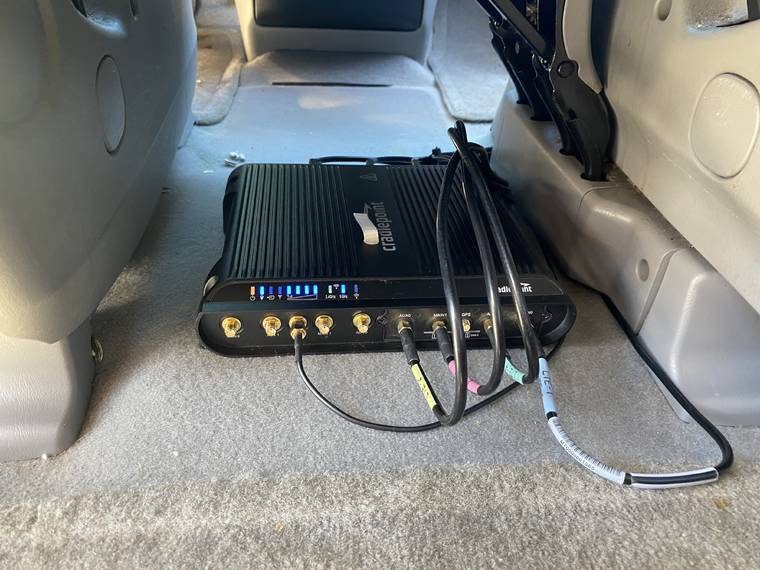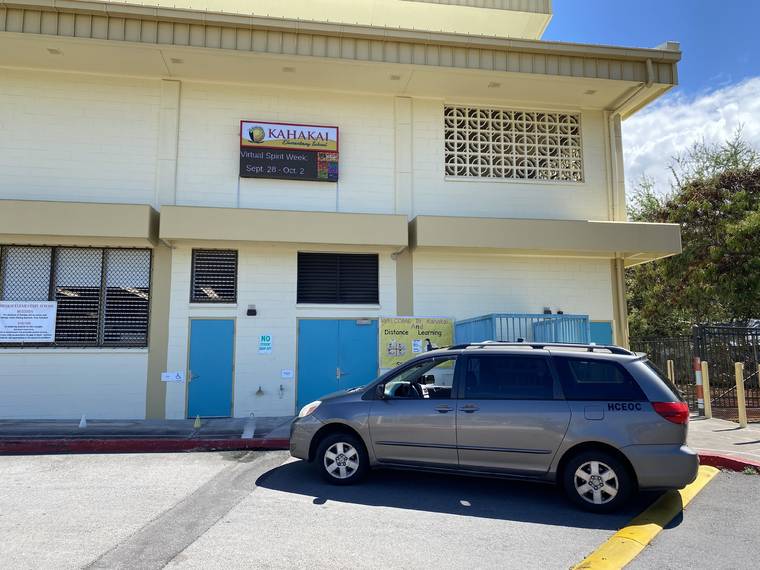Editor’s note: Each Wednesday, West Hawaii Today is publishing a story about individuals, groups or organizations that have helped make life better for others in our community during the COVID-19 pandemic.
School and community partners in North Kona launched collaborative WiFi on Wheels project this fall to support students struggling with distance learning due to lack of a home internet connection.
Nonprofit organizations Hawaii County Economic Opportunity Council (HCEOC), Teach For America Hawaii, and HawaiiKidsCAN partnered with Kahakai Elementary School and the Hawaii County Department of Research and Development to equip a vehicle with a mobile router from Cradlepoint that features unlimited wireless data from AT&T.
This hub is on a route to bring connectivity directly to students, and is able to provide high-speed internet at a radius of 100 feet to 200 feet for approximately 100 simultaneous users, depending on specific terrain of the area, ensuring that students are able to access online programming while maintaining safety guidelines and social distancing.
The hub is supported by funds from Teach For America Hawaii and the federal Coronavirus Aid, Relief, and Economic Security (CARES) Act. HCEOC has deployed an additional 16 mobile internet hubs across Hawaii Island using CARES Act funds.
As of Nov. 10, approximately 160 students from Kahakai Elementary and other local schools were accessing the service on a regular basis from Kahaluu Housing Complex and Kamaaina Hale.
“We are so grateful for the support of our community partners to help us address the inequity of access amongst our students,” said Jessica Dahlke, vice principal at Kahakai Elementary School. “In this time of Distance Learning, access to Wi-Fi is synonymous to access to education. And those who feel the lack of access most profoundly are those who need education the most. Our underserved families will reap the benefits of what has been accomplished here.”
Roughly 10% of Hawaii’s residents do not have an internet subscription in their homes, according to 2018 Census data. The lack of internet access grows when focusing on certain demographics. The state’s Native Hawaiian and Pacific Islander population has an even lower rate of internet access with 20.1% having access to a subscription. The issue is even more prevalent with households with the educational attainment of less than a high school diploma or equivalent, 26.5% of whom have no access to the internet.
According to state Department of Education surveys, 83% of secondary students surveyed said they had a home computer they could use for distance learning, while 71% said there were sufficient devices in their household per family member to use. Half the students surveyed said they had “quite reliable” internet access. About 22% of students surveyed said they participated in distance learning through paper packets, while 83% said they did so through online delivery.
Know a Hometown Hero who should be highlighted next Wednesday? It can be anybody, from a youngster doing good for the community, to a professional helping with the COVID-19 pandemic, or even a kupuna! Please send your nominations to cjensen@westhawaiitoday.com with the subject: Hometown Heroes Nomination. Please include the hero’s name, contact information and what makes them a hero.









